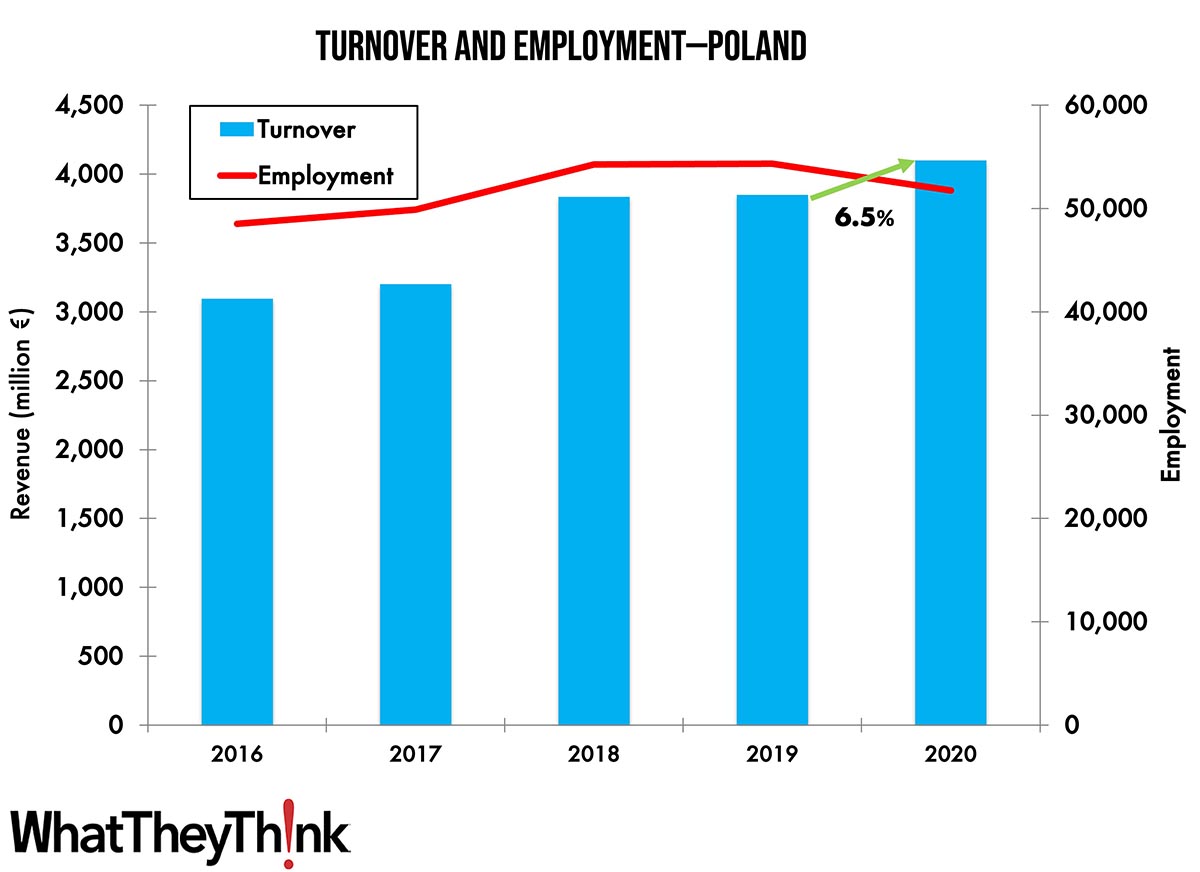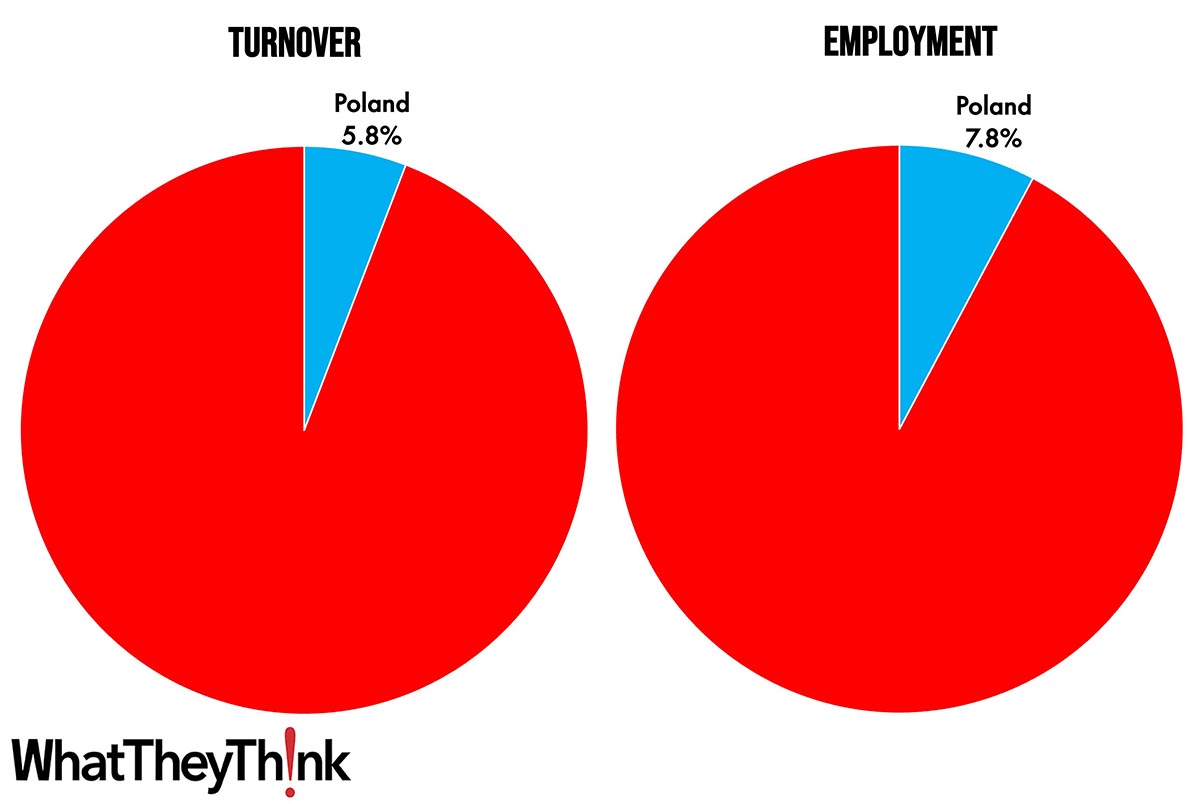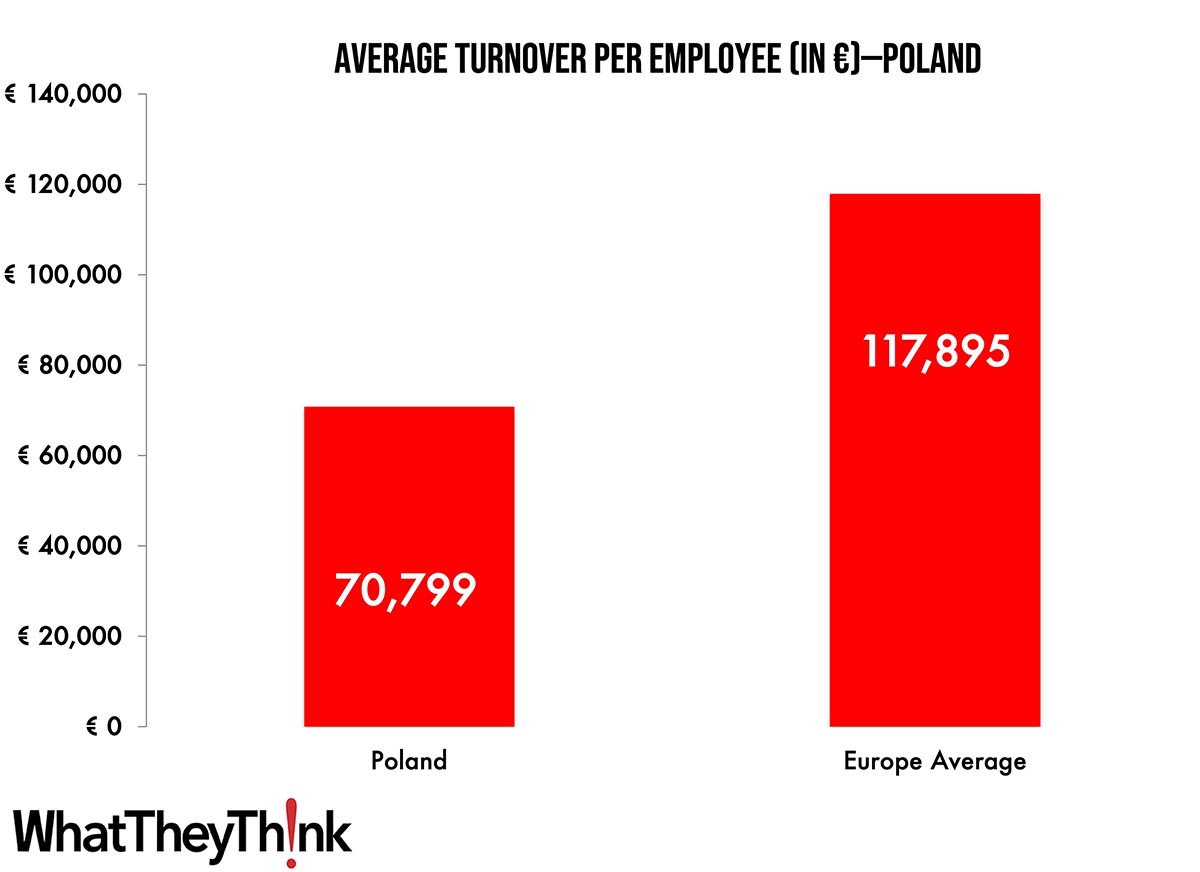The full results on turnover (that is, revenues) in the printing industry in Europe for 2020 were published late in 2022—after index data was the only source for print volume developments during the pandemic. While the index data only allowed for volume developments, now real turnover data is available, even if the data is far from perfect.
Against the general trend in Europe, the turnover for commercial printing in Poland experienced steady growth, moving from €3.1 billion in 2015 to €3.85 billion in 2019, an average annual growth of 4.3%. The growth rate is among the highest in Europe. In 2020 during the pandemic the growth even accelerated to 6.5%, resulting in a turnover of €4.1 billion. Based on the earlier production volume index data a slight decline or flat market was expected, so this is a pleasant surprise.
The number of persons employed showed an upwards trend although at a slower rate than the turnover development. Overall employment had an average annual growth of 2.6% from 2015 to 2019. In 2020 Poland posted a small decline of 4.8% in employment, however, showing some effect of the pandemic on the industry.

Source: Eurostat 2022 and digitalprintexpert.de
Overall, the printing industry in Poland accounted for 5.8% of the total European printing industry in 2020, falling between Spain and the Netherlands—after Poland overtook the Netherlands in 2018. In terms of the number of employees in print, the European share of Poland is noticeably bigger at 7.8%, almost the employment number of France.
Poland—Share of Turnover and Employment in Commercial Print in Europe, 2020

Source: Eurostat 2022 and digitalprintexpert.de
Based on Eurostat numbers for turnover and the number of employees in the printing industry the average annual turnover per employee can be calculated. The €70,799 for 2019 is below the European average and in the range of most Central and Eastern European countries. The value is somewhat higher than the data from the South-East European countries, however. The employment number does include part-time employees and owners with a salary. The year 2019 has been chosen as a basis for the comparison as 2020 could have been impacted by the COVID-19 pandemic and the differing speeds the labour markets reacted.

Source: Eurostat 2022 and digitalprintexpert.de
Please keep in mind that the data is based on Eurostat numbers for printing and related services (complemented by some estimates), which consists mainly of commercial and publishing printing, including prepress and finishing companies. That means that packaging, data center, direct mail print, or quick print/copy shops are not included or only on a limited basis. In house print/CRD are not included at all. Europe as used in the series of articles includes the EU countries plus Norway, Switzerland, and the UK. If you have questions about sizing the European printing industry or need clarification, please contact me at [email protected] .
This series on the turnover and employment development in commercial print in Europe will be continued. Next time we will have a look at the printing industry in Czechia.














